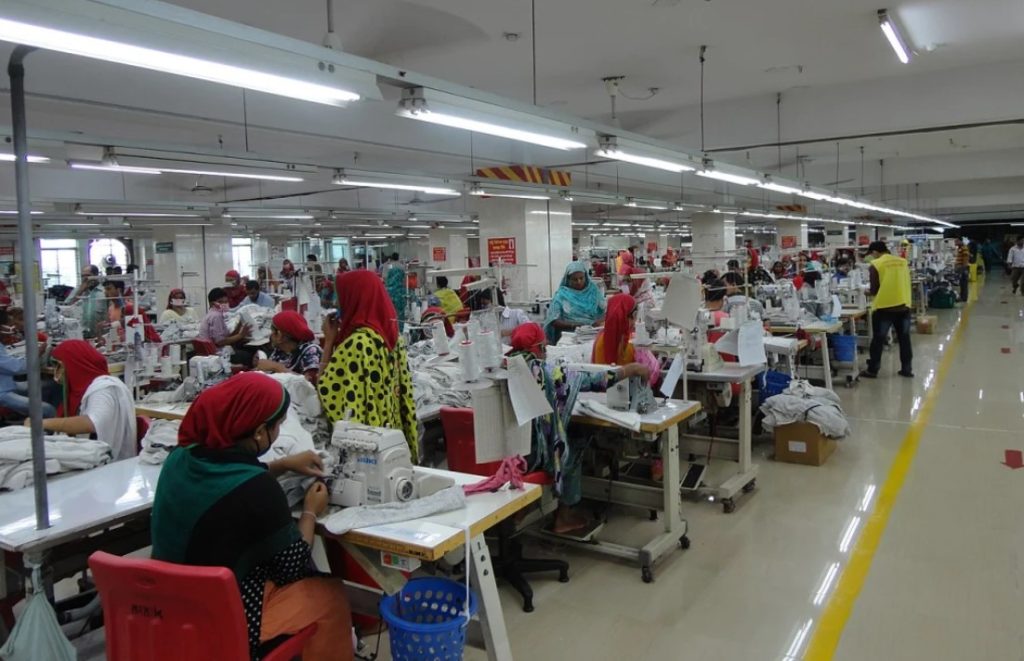Introduction
The Bangladeshi garment industry has experienced explosive growth over the past few decades, firmly establishing itself as a major player in the global fashion industry and driving the country’s economic progress. In this article, we delve into the sector’s history, tracking its evolution from humble beginnings, highlighting its key achievements and the challenges it has overcome to reach its current position.
Origins and Early Developments
The history of Bangladesh’s garments industry dates back to the early 1970s, soon after the country gained independence from Pakistan. During this period, the industry was largely dominated by small-scale cottage industries and informal home-based work, with a limited focus on exports.
However, in the 1980s, the government implemented policies aimed at promoting export-oriented industries, including the garment sector. These initiatives included the establishment of export processing zones, provision of infrastructure, tax incentives, and trade liberalization measures. These policies led to a surge in foreign direct investment (FDI) in the sector, which catalyzed its growth.

The Bangladesh Garment Manufacturers and Exporters Association (BGMEA) was founded in 1983 to represent the interests of garment manufacturers and exporters. Since then, the association has played a pivotal role in safeguarding the welfare of the industry by lobbying the government on policy matters, providing training and capacity-building programs for industry workers, and promoting good practices in social and environmental sustainability.
The garments industry in Bangladesh has also faced challenges, including weak infrastructure, low labor productivity, and poor working conditions. However, the sector has made significant strides in addressing these issues, including the adoption of international labor standards, investing in technology and modern manufacturing techniques, and improving worker safety and welfare.
Today, the Bangladeshi garments industry is a major contributor to the nation’s economy, accounting for over 80% of its export earnings and employing over 4 million workers, mostly women. The sector has also become a significant player in the global fashion industry, with major brands sourcing their products from the country.
In the 1980s, Bangladesh started to attract foreign investors, primarily from Japan and South Korea. These investors established the first modern garment factories in the country, focusing on producing knitwear and woven garments for export. The Quota System, introduced by the Multi-Fiber Agreement (MFA) in 1974, played a crucial role in boosting the industry’s growth during this period.
The Rise of the Ready-Made Garment (RMG) Sector
The 1990s marked a significant turning point for Bangladesh’s garments industry, as the ready-made garment (RMG) sector emerged as the backbone of the nation’s economy. This growth was fueled by several factors, including increased foreign investment, the availability of a large, skilled, and low-cost workforce, and the gradual phase-out of the Multi-Fiber Arrangement (MFA), which led to an influx of new buyers and increased competition.

By the late 1990s, Bangladesh had become the second-largest garment exporter globally, primarily due to its ability to offer competitive prices and cater to the rising demand for fast fashion. The country’s garments industry also benefited from preferential market access to the European Union under the Everything But Arms (EBA) initiative, which allowed tariff-free and quota-free access to EU markets for all products except arms and ammunition.
This growth in the RMG sector also brought with it a series of challenges, including issues related to labor rights, safety concerns, and environmental sustainability. The industry has worked to address these concerns, with initiatives such as the Accord on Fire and Building Safety in Bangladesh, which aims to improve factory safety standards and protect workers’ rights.
Despite these challenges, the Bangladeshi garments industry has continued to grow, with the sector now contributing over $30 billion to the country’s economy and employing millions of workers. The industry’s success has also helped to position Bangladesh as a key player in the global fashion industry.
Challenges and Transformations
Despite experiencing remarkable growth in recent decades, Bangladesh’s garments sector has faced numerous challenges over the years. These challenges have included violations of labor rights, workplace safety concerns, and the devastating impact of natural disasters such as the 2013 Rana Plaza collapse and the 2020 COVID-19 pandemic.

In response to these challenges, the Bangladesh government, international organizations, and the global fashion industry have come together to implement various initiatives aimed at improving labor conditions, workplace safety, and sustainability practices. Notable examples of these initiatives include the Accord on Fire and Building Safety in Bangladesh, a legally binding agreement between global brands and unions that seeks to improve factory safety standards, and the Alliance for Bangladesh Worker Safety, a five-year initiative to improve worker safety in the country’s RMG sector.
The government of Bangladesh has also taken steps to address these challenges, including the establishment of a minimum wage for workers in the garments industry, the adoption of new labor laws, and the creation of a national labor inspectorate to monitor and enforce labor standards.
While these initiatives have helped to improve labor conditions and workplace safety in Bangladesh’s garments sector, there is still much work to be done. The industry and its stakeholders must continue to work together to ensure that the sector is not only profitable but also sustainable and socially responsible.
The Future of Bangladesh’s of Garments Industry :
“Forecasting the Future of Bangladesh’s Garments Industry: Opportunities, Challenges, and Sustainable Growth Strategies” is an important topic that reflects the current state of the sector and the need for continued progress. As Bangladesh’s garments industry continues to evolve, it faces opportunities and challenges that will shape its future growth trajectory.

Some of the opportunities for the sector include increasing demand for sustainable and ethical fashion, advancements in technology and automation, and the potential to diversify into new product lines beyond the traditional textiles and apparel. However, the industry also faces challenges, such as competition from other low-cost manufacturing countries, the need to improve labor conditions and safety, and the impact of climate change on the sector’s sustainability.
To ensure sustainable growth and address these challenges, the industry needs to adopt a holistic approach that considers economic, social, and environmental sustainability. This approach includes initiatives such as investing in worker training and development, improving access to finance for small and medium-sized enterprises, and promoting sustainable production practices that reduce environmental impact.
The government of Bangladesh can also play a crucial role in supporting the sector’s sustainable growth by creating a favorable policy environment that encourages innovation, promotes ethical and sustainable practices, and facilitates international trade. In addition, the industry needs to work closely with international buyers, consumers, and stakeholders to build a transparent and responsible supply chain that benefits the entire value chain.
In conclusion, the future of Bangladesh’s garments industry is bright, with many opportunities for growth and development. However, to achieve sustainable growth and overcome the challenges facing the industry, it must adopt a responsible and holistic approach that balances economic, social, and environmental sustainability.
